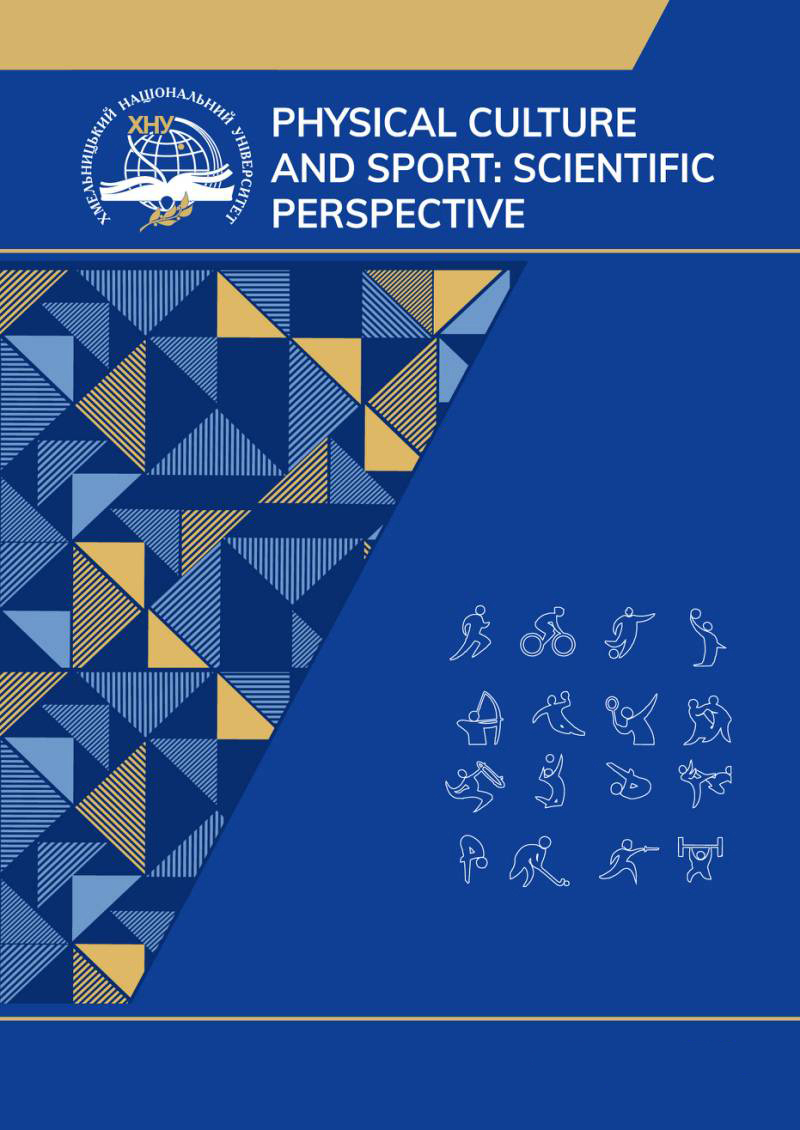PHYSICAL THERAPY ATHLETES OF GAME SPORTS AFTER ARTHROSCOPIC TREATMENT OF KNEE JOINT INJURIES
DOI:
https://doi.org/10.31891/pcs.2024.3.13Keywords:
injuries, physical therapy, balance training, football playersAbstract
Knee injuries are one of the most common problems among athletes in game sports such as football, basketball, handball and volleyball. Given the high loads on the musculoskeletal system during rapid movements, jumps and sudden changes in the direction of movement, athletes of these sports often suffer damage to the structures of the knee, including the menisci, ligaments and cartilage. The purpose of the study: to develop a program to improve the functional state of the knee joint in athletes of game sports after arthroscopic treatment and experimentally evaluate its effectiveness. Research methods. Theoretical research methods were used in the work: analysis, comparison, induction, deduction, systematization and generalization of scientific and methodical literature, pedagogical experiment, medical and biological methods, methods of mathematical statistics. Work results. At the end of the study, the index of knee joint flexion in athletes of the main group was significantly higher compared to the control group by 25.74 degrees (p<0.001), and extension by 14.30 degrees (p<0.001). In the control group, changes in knee flexor strength were not statistically significant, with an improvement of 0.35 points (p>0.05), while extensor strength increased by 0.25 points (p>0.05). In the main group, there was a significant improvement in the strength of the knee joint flexors by 1.82 points (p<0.001), and the strength of the extensors - by 1.90 points (p<0.001). At the end of the study, after the operation, pain sensations in both groups became close to normal indicators, however, in the main group, the level of pain syndrome was significantly lower than in the control group. Conclusions. Thus, the results of the study testify to the importance of the use of specialized physical rehabilitation programs to achieve optimal results in the recovery of athletes after arthroscopic operations.
References
Antonio, K., Sven, E. P., Samuel, G., Vikram, K., Takeshi, O., & David, A. P. (2021). Tegner level is predictive for successful return to sport 2 years after anterior cruciate ligament reconstruction. Knee Surgery, Sports Traumatology, Arthroscopy, 29(9), 3010–3016.
Ariel, N. R., Robert, F. L., & Andrew, G. G. (2022). Combined meniscus repair and anterior cruciate ligament reconstruction. Journal of Orthopaedic Surgery and Research, 38(3), 670–672.
Bandy, W. D., & Irion, J. M. (1994). The effect of time on static stretch on the flexibility of the hamstring muscles. Physical Therapy, 74(9), 845–850.
Bronwyn, D., Geoffrey, V., & Iain, R. (2014). Physical principles demonstrate that the biceps femoris muscle relative to the other hamstring muscles exerts the most force: Implications for hamstring muscle strain injuries. Journal of Sports Science & Medicine, 4(3), 371–377.
Chilan, B. G. L., & Marco, K. D. (2019). Biological enhancements for anterior cruciate ligament reconstruction. Current Orthopaedic Practice, 27(6), 325–330.
Chun-De, L., Jau-Yih, T., Shih-Wei, H., Hung-Chou, C., Yen-Shuo, C., & Tsan-Hon, L. (2019). Preoperative range of motion and applications of continuous passive motion predict outcomes after knee arthroplasty in patients with arthritis. Knee Surgery, Sports Traumatology, Arthroscopy, 27(4), 1259–1269.
Clarkson, H., & Gilevich, G. (1989). Musculoskeletal assessment: Joint range of motion and manual muscle strength. Baltimore: Williams & Wilkins.
Clemens, M., Werner, K., Dominik, S., Christian, P., Leopold, H., Borys, F., Peter, A., Volker, A., & Matthias, K. (2022). Current standards of early rehabilitation after anterior cruciate ligament reconstruction in German-speaking countries: Differentiation based on tendon graft and concomitant injuries. Archives of Orthopaedic and Trauma Surgery, 29(7), 40–60.
Dias, J. M., Mazuquin, B. F., & Mostagi, F. Q. (2013). The effectiveness of postoperative physical therapy treatment in patients who have undergone arthroscopic partial meniscectomy: Systematic review with meta-analysis. Journal of Orthopaedic & Sports Physical Therapy, 43(8), 560–576.
George, K., Nikolaos, M., Ricard, P., David, T., Georgios, B., & Nicola, M. (2020). Neuroplasticity and anterior cruciate ligament injury. Journal of the American Academy of Orthopaedic Surgeons, 54(3), 275–280.
Downloads
Published
How to Cite
Issue
Section
License
Copyright (c) 2024 Тетяна ОДИНЕЦЬ , Катерина БАНДУРІНА, Ельдар ШЕВЧЕНКО

This work is licensed under a Creative Commons Attribution 4.0 International License.





